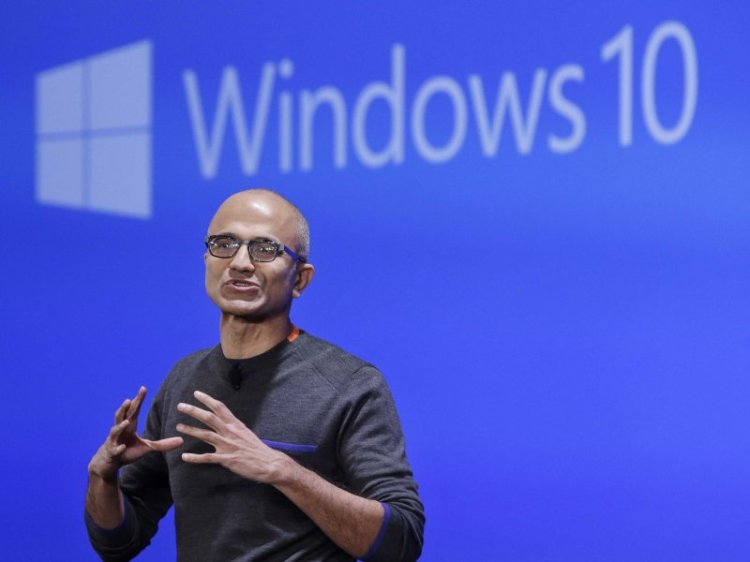I don’t know if I broke a law of computing or committed heresy. But I installed Windows 10 on my Macbook Pro. I had feared that this would condemn me to computing hell. But it has been an incredibly positive experience: My favorite Microsoft Office applications — Outlook, Word, and PowerPoint — work faster than ever before, and I can still use Apple peripherals — a Thunderbolt Display and Thunderbolt external hard drives. The best part is Windows 10 itself. It is a beautifully designed operating system that gives me the best of the past and present — maintaining the usability and familiarity of the old Windows operating system and letting me download slick apps designed for tablets.
Another Microsoft product that I had written off years ago is Microsoft’s Internet Explorer. The jury is still out, but Microsoft’s new browser, Edge, seems faster than Google’s Chrome. I may end up switching browsers as well.
I had thought I would never install a Microsoft operating system ever again after my experience with Windows 8. It was terrible: inelegant, difficult, and expensive. It took me about 10 minutes to conclude that Microsoft had lost touch with its customers and was destined to go the way of AOL and Myspace, and I switched all I could to Apple.
But I still needed the Microsoft Office tools, because they are industrial strength and Apple still has no products that are as good. To use these, I had to load Windows and Office under VMware on my MacBook. Instead of getting the best of both worlds, though, I got the worst: pathetically slow applications, poor battery life, and inconsistent user interfaces.
Then, last week, at an event hosted by CIO magazine, where I gave a keynote, I spoke to a group of Chief Information Officers of large and midsized companies about technology trends. The vast majority said they were buying Microsoft’s Surface Pro tablets for their users and upgrading desktop machines to Windows 10. In this era of iPads and iPhones, why would any company install such antiquated and clumsy technology, I asked. I was surprised at the response.
Several CIOs told me that I was out of touch with Microsoft’s new products. They told me that Surface tablets integrated better with their enterprise-computing infrastructure than do iPads; have much-needed features such as USB 3.0 ports and keyboards; are more secure than iPads; and most importantly, provide a consistent user interface and experience to business users. The CIOs said that Microsoft is a much better company to deal with than Apple, which has become known for arrogance and a lack of concern for the needs of enterprise customers.
I realized that Microsoft is no longer the same “evil empire,” the monopoly, that everyone once hated. It has many loyal fans in the business world.
This didn’t jibe with all the criticism that I have been reading in the press about the lack of security of Microsoft’s new operating system. The commonly raised concerns are about Windows 10’s continual uploads and downloads of data to Microsoft servers and the default installation options — which give Microsoft all sorts of rights.
I shared these serious criticisms of Windows 10 with Microsoft chief executive Satya Nadella and asked him how Microsoft planned to address them. In response, he said the “core reasons for Windows 10 as a service is more assurance of continuous security updates, app compatibility, and roaming of the user info across devices you use with transparency and control with the user. For any business customer there are tons of tools that provide all kinds of additional control.” He assured me that Microsoft was in touch with customer needs; and all of the CIOs I spoke with agreed with his assessment. They said they had customized the Windows 10 installation for their needs and believed that the new method for distributing updates would provide better security.
This is what convinced me to give Microsoft another chance and take the plunge into Windows 10.
The default options for consumers in the Windows 10 installation are indeed problematic. I would not suggest that anyone use its default installation settings. They grant Microsoft the right to use your data to market to you, to automatically connect you to Wi-Fi networks and marketing “beacons,” and to sell some of your information. But all of these options can be turned off. Microsoft is actually being more honest than other technology companies are that do much of this without informing customers and hide details in the lengthy contracts that no one reads. Given that Microsoft is providing Windows 10 for free to the majority of its customers, this is a small inconvenience for people who really care about their privacy or don’t want to be marketed to.
What is clear is that Microsoft is back — in full force. This is a good thing; Apple and Google desperately need the competition that Microsoft will once again provide.
Vivek Wadhwa is a fellow at Rock Center for Corporate Governance at Stanford University, director of research at Center for Entrepreneurship and Research Commercialization at Duke, and distinguished fellow at Singularity University. His past appointments include Harvard Law School, University of California Berkeley, and Emory University.


